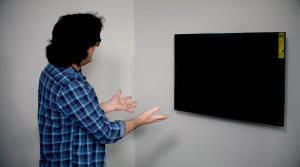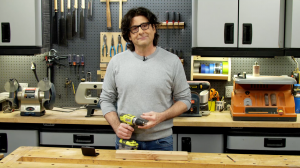How to Duplicate Molding That is Damaged or Missing
How to Match Your Original Molding
I started replacing some rotted woodwork down here caused by a water leak. Now the baseboard was no problem, I took off the old piece here, and I happened to have a matching piece, which will go right in here. But I don’t have a matching piece for this casing, and I don’t want to replace the entire door frame, because it wouldn’t match the rest of the house. But there is a solution.
This job can get a little messy, so the first job is to mask the floors and adjacent walls. The material we’ll be using to make this repair is polyester resin or auto-body filler. It comes in two parts, the resin itself, and a catalyst that’s added from a small tube. Using the polyester resin, we’re going to be making a casting of the original moulding. To be sure the resin releases, I’ll first spray the surface with a lubricant like WD-40. Now, I’ll spread the body filler on the moulding. You don’t have to worry about being too neat right here. In just a few minutes, the resin will harden into a semi rubbery state. Now’s the time to do some trimming, and then remove the new mold.
To prepare the mold for casting, we put a wooden block on either end and again spray the inside with WD-40. Another batch of polyester resin is mixed up and poured into the mold. While the casting is still flexible, it’s removed from the mold, and the excess trimmed off. Small air bubbles are filled with speckle, and then the pieces are sanded. A little bit of paint, and you’d be hard-pressed to tell that replacement from the original.
Blog Articles
Expert Tips: How to Mount a TV on the Wall
Get step-by-step instructions on how to mount a TV on the wall, especially for big screen TVs. Master the art of wall mounting with our tips.
Frustrated by Stripped Screws? Here’s How to Get Them Out Fast
We've all been there. You're in the middle of a project, and suddenly your screwdriver spins uselessly in the screw head. The screw is stripped, and frustration sets in. With a little know-how and this simple trick, you can tackle a stripped screw and get your project back on track.
The Secret to Finishing Plywood Edges
Plywood projects are fantastic, but exposed edges can be an eyesore. This blog post unveils the magic of edge banding - a simple technique to create flawless, finished edges on your plywood projects, making them look professional and ready for paint or stain. Watch the video to learn how to apply edge banding like a pro!





